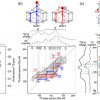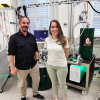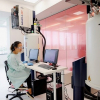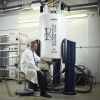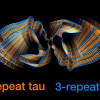The exchange of molecules between different physical or chemical environments due to diffusion or chemical transformations has a crucial role in a plethora of fundamental processes such as breathing, protein folding, chemical reactions and catalysis. The NMR Research Unit at the University of Oulu developed a nuclear magnetic resonance (NMR) method to speed up to 10,000-fold the detection of molecular exchange. The method has been used in climate change research to understand the composition of atmospheric aerosols in collaboration with the Nano and Molecular Systems (NANOMO) Research Unit at the University of Oulu.
Molecular exchange phenomena can be studied by Diffusion EXchange SpectroscopY (DEXSY). The method is based on the fact that, when the environment of a molecule changes, its diffusion coefficient, which represents the amount of thermal motion, changes as well. However, the conventional DEXSY method is slow, as each point of multidimensional data has to be collected in separate measurements. Based on spatial encoding of multidimensional data, the NMR Research Unit developed an ultrafast DEXSY experiment, by which the data could be collected in a single scan.
The method was used to investigate surfactants present in atmospheric aerosols. The study revealed that the surfactants form nanovesicles, which encapsulate water molecules. The method was used to determine how quickly water molecules moved from inside vesicles to outside of them. Structures formed by surfactants can have a significant impact on the surface tension of cloud droplets and, therefore, on climate models. The work was published in Nature Communications.


